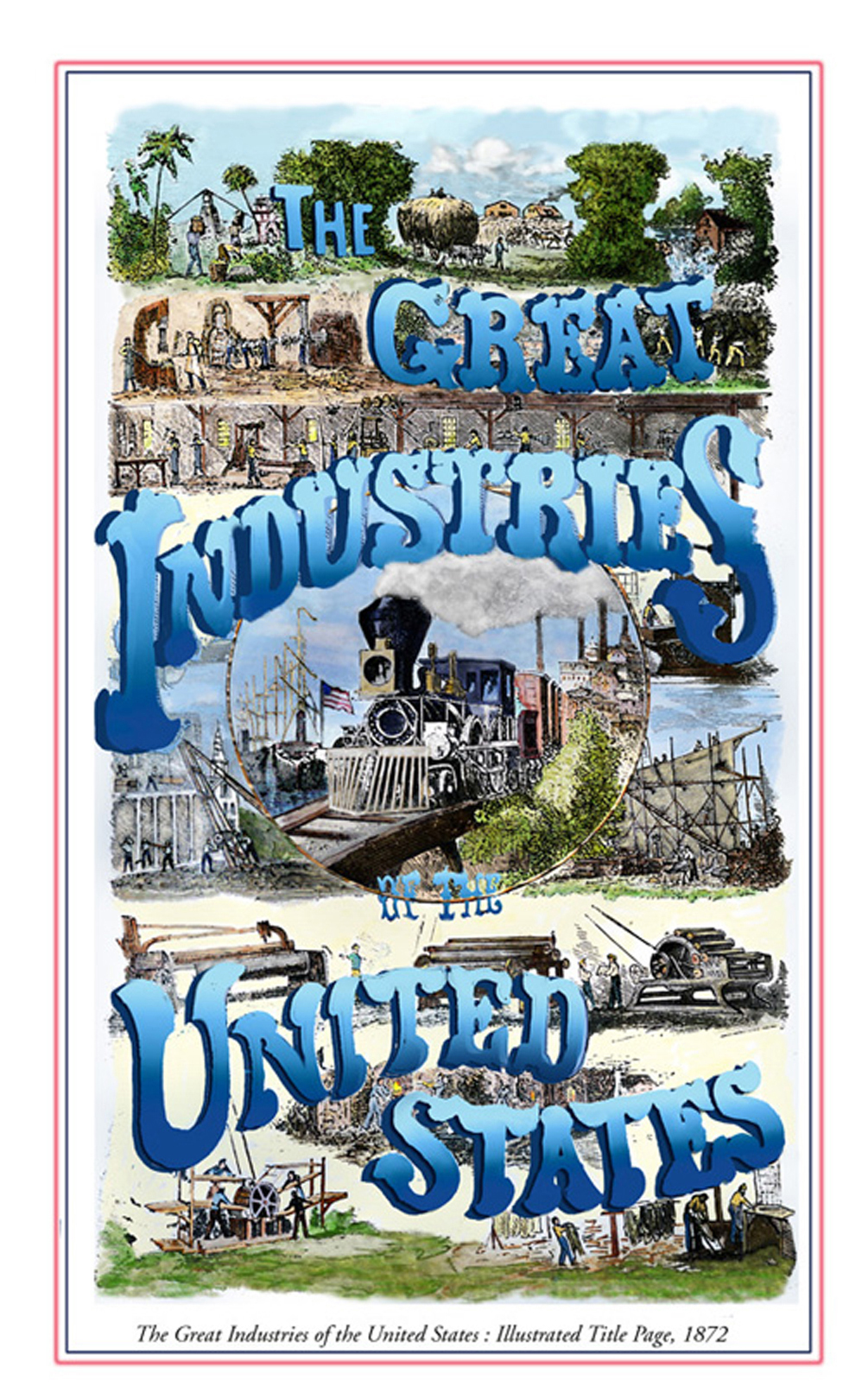
The Great Industries
The Great Industries of the United States by Horace Greeley
With the dawn of the 19th century, a discernable shift occurred in the
economy of the United States. Prior to that century, America had been
primarily agrarian. A new era of industrialization introduced a need for the
building of factories. The construction of these factories and the personnel to
work in them encouraged a migration from the country to the city. In fact, it
would be this migration that assisted in the establishment of new urban
centers.
While agriculture would remain of continued importance, people were
moving to the city in large numbers. New inventions were being created and
patents established. The invention of the steam engine would lead to the
building of a transcontinental railroad across the United States. On May 10,
1869, the Central Pacific and the Union Pacific Railroads joined together at
Promontory Point, Utah. As the late historian Stephen Ambrose stated in his
book Nothing Like it in the World; The Men Who Built the Transcontinental
Railroad, “the transcontinental railroad had its watershed moment. Coast-to-coast
travel time was reduced in that instant, from four to six months to six
days.” Advancements in technology and the inventions that fueled those
advancements solidly catapulted America into an industrial age.
Great Industries, published in 1872 four years before the US Centennial, was used to inform and welcome States and Territories to participate in the US Centennial of the Declaration of Independence technological and industrial exhibits in Philadelphia in 1876.
For more information on Horace Greeley=https://en.wikipedia.org/wiki/Horace_Greeley
